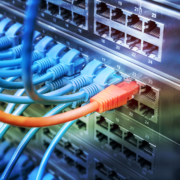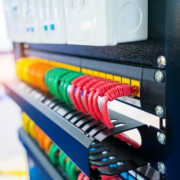Why is Structured Cabling Important?
What is Structured Cabling?
Structured cabling is a general term that encompasses all the aspects involved with bringing network connectivity to a building. This includes everything from the design of the cable plant, installation, and termination of the cables. Ensuring proper testing procedures are followed throughout, and finally monitoring and maintaining the overall system over its life cycle. Why is Structured cabling important?
Why is it Important?
Without properly designed, installed, and maintained structured cabling, the end user will either not be able to effectively connect their workstation to the network. The user will experience issues connecting and maintaining a connection with the devices. Resulting in a loss of productivity for them, impacting business operations. Furthermore, without properly designed structuring cabling, local area networks (LAN) cannot be expanded to support more users. This can lead to underutilization of the network.
Why is Structured Cabling Important? A Brief History
Network cabling plays a vital role in keeping businesses connected and therefore plays an important role in supporting business operations as well as continued growth. A general timeline of how structured cabling has evolved over the years is as follows.
Before computers, data was transmitted across telephone lines. This consisted of one main cable that connected telephones to each other and another line (or multiple) that provided power for the phones themselves. With the introduction of electronic switching systems, more sophisticated equipment began replacing individual telephone handsets. This allowed related equipment to be consolidated at a central location. Thus, allowing for the emergence of a private branch exchange (PBX). Again, all this equipment required power and therefore dedicated lines were still being used to transmit data.
1970 – 1980
The first mainframes emerged. This provided a one-way connection from the host to the user. At this time, the users were not on the same network as the mainframe, but rather connected to it separately. The first LANs began emerging during this period. They were composed of individual nodes (computers) that shared a common bus such as ARCNET or token ring. Each computer was attached to its own terminal, which meant that each system had an individual line that was tethered to it.
1980 – 1990
Token ring networks began to emerge in local area networks (LAN) during this period since it allowed for higher data transfer speeds. A token was passed around the ring until it came back to its original sender. At this point, the sender had complete control of the line and sent data to all other attached systems, which were in standby mode until they received their turn to transmit. ARCNET networks were still in use during this time, but generally for smaller systems.
Introduction Of LANs
With the introduction of Local Area Networks (LANs) came the need for better connectivity between systems. The type of cabling that was most used during this time period was coaxial cable due to its ability to increase bandwidth and also maintain a certain distance. This varied depending on the specific type of cabling that was being used. This resulted in cabling that was either directly attached to the computer. For example, general computer-to-computer cabling or required a T-connector which was used to connect the computers to the wall.
1990 – 2000
During this decade. Ethernet emerged as an alternative copper media for shorter distances because it allowed for high data transfer speeds and was less expensive than coaxial cable. However, it did not provide the same bandwidth due to its ability to support a smaller distance and therefore, required multiple connections in order to achieve faster speeds. As such, it was often used for wiring closets and switches where individual nodes could be wired directly into ports on the switch. The cabling that was used in this system could vary from Unshielded Twisted Pair (UTP) to shielded twisted pair (STP). Ethernet cabling required the use of a connector at both ends. One end being attached directly to the computer while the other was plugged into an Ethernet port on the switch.
What are the benefits of structured cabling?
Structured cabling is a means to provide efficient and effective use of communications systems through the use of predetermined pathways that allow for the fast and economical expansion of systems. It also allows for integration of new technologies. In addition, it provides high-bandwidth capabilities, supports voice/data/video applications. Increases flexibility in network design and deployment and enhances security in the transmission of data.
What is structured cabling used for?
Structured cabling can be used to build a contemporary high-speed integrated information infrastructure that provides the “wire” needed to support voice, data and video services in a building or campus. Furthermore, structured cabling is a cost-effective solution for future network extensions and enhancements. Allowing for a wide range of connectivity options within the same cable. The use of structured cabling in the installation, management and administration of networks enhances network performance, quality of service (QoS) and cost effectiveness for customers.
Click this link for further articles – What is Data Cabling and what is it used for?





